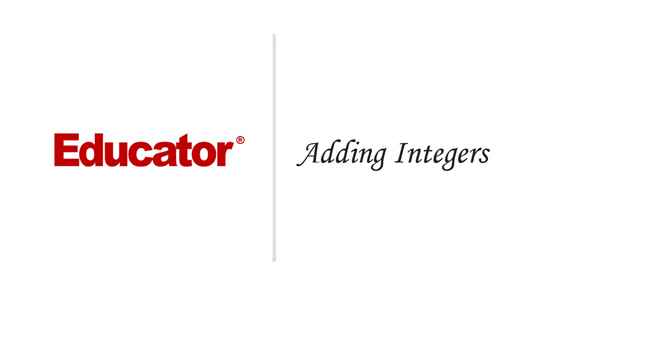Connecting...

This is a quick preview of the lesson. For full access, please Log In or Sign up.
For more information, please see full course syllabus of Basic Math
For more information, please see full course syllabus of Basic Math
Basic Math Adding Integers
Lecture Description
In this lesson our instructor talks about adding integers. She talks about using a number line and two examples. She discusses how to add integers with opposites signs and same sign. Four complete extra example videos round up this lesson.
Bookmark & Share
Embed
Share this knowledge with your friends!
Copy & Paste this embed code into your website’s HTML
Please ensure that your website editor is in text mode when you paste the code.(In Wordpress, the mode button is on the top right corner.)
×
Since this lesson is not free, only the preview will appear on your website.
- - Allow users to view the embedded video in full-size.










































 Answer Engine
Answer Engine



2 answers
Last reply by: Hubery Yang
Thu Oct 1, 2020 8:16 AM
Post by Jeannette Eason on June 27, 2018
eat
2 answers
Last reply by: Dmitry Kischukov
Thu Apr 22, 2021 7:14 AM
Post by Shiden Yemane on August 30, 2017
When was this video made? Anyone who knows, please answer.
Thanks!
4 answers
Last reply by: Seshi Reddy
Fri Dec 6, 2019 11:42 AM
Post by Noor Mohammad ibrahimi on August 15, 2013
In Adding integers in extra example 3: find the Value: there is an example as follow:
15 + - 9 = 24
I think the answer should be = 6
please let me know if I wrong.
thanks,
Noor
1 answer
Last reply by: Hubery Yang
Thu Oct 1, 2020 8:18 AM
Post by Jeanette Akers on October 22, 2012
This is a GREAT visual presentation. MANY years ago I tried to explain how to add and subtract integers to an 8th grade and failed miserably. Had I explained it the way this presentation does, the child would probably have understood how to do this.
1 answer
Last reply by: Milan Ray
Fri Apr 18, 2014 3:43 PM
Post by judy lee on August 22, 2011
I am having struggles with adding and subtracting positive and negative numbers.
Can you help?